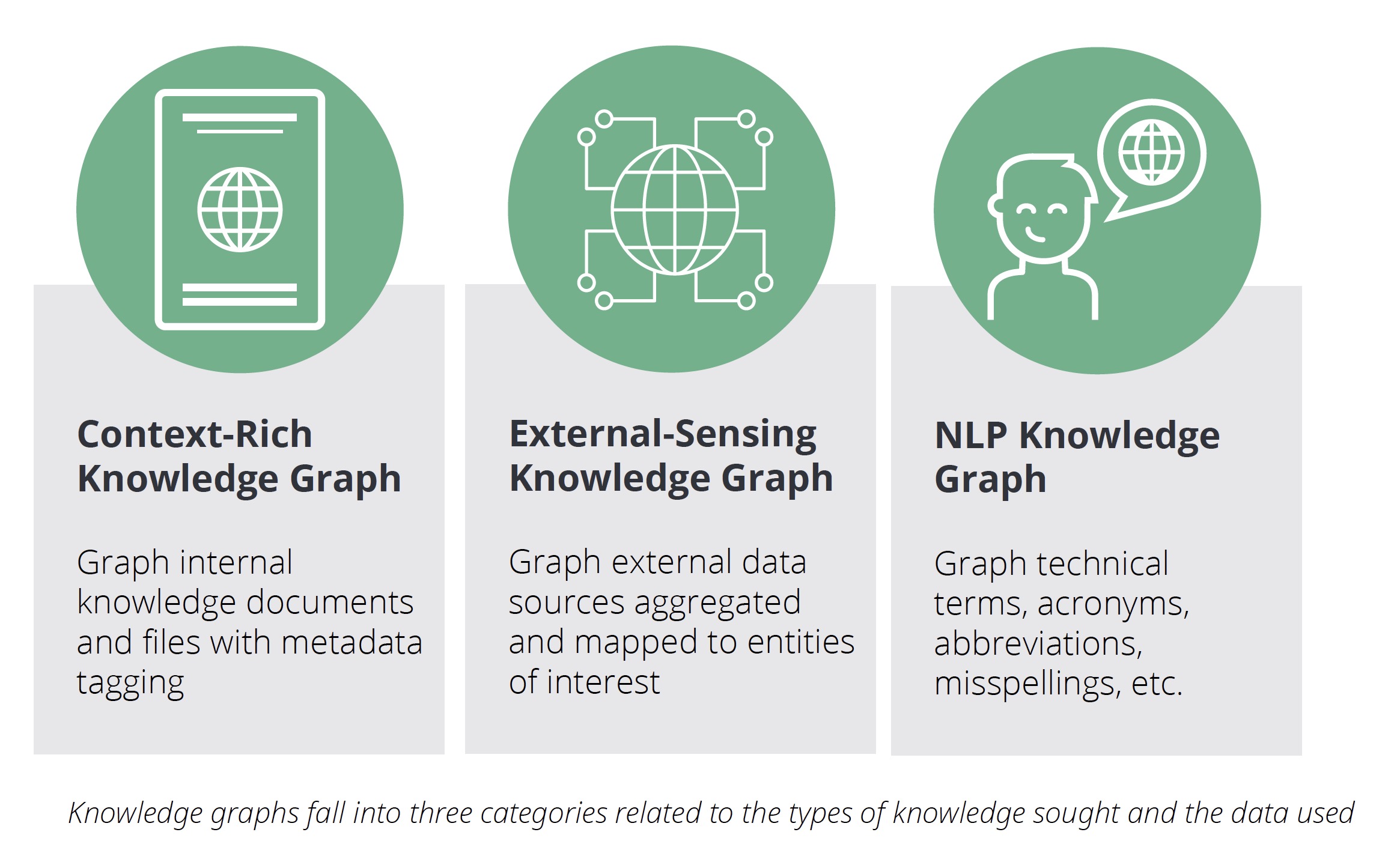AI & Graph Technology: What Are Knowledge Graphs?

Graph Analytics & AI Program Director
5 min read

Last week in the first installment of our five-part blog series on AI and graph technology, we gave an overview of four ways graphs add context for artificial intelligence: context for decisions with knowledge graphs, context for efficiency with graph accelerated ML, context for accuracy with connected feature extraction, and context for credibility with AI explainability.
This week, we examine knowledge graphs, which provide context for decision support (e.g., for call center staff or support engineers) and help ensure that answers are appropriate to the situation (e.g., autonomous vehicles in rainy driving conditions).
This will give you insight into how a graph technology platform like Neo4j enhances AI with knowledge graphs.
Knowledge Graphs: Context for Decisions
One of the AI areas that’s moved into production fastest is decision support. Let’s say we’re trying to solve a real-world problem: making a decision that requires a human to have the right contextual, relevant information and trying to automate or streamline that process in some way.
Knowledge graphs offer a way to streamline workflows, automate responses and scale intelligent decisions. At a high level, knowledge graphs are interlinked sets of facts that describe real-world entities, facts or things and their interrelations in a human understandable form. Unlike a simple knowledge base with flat structures and static content, a knowledge graph acquires and integrates adjacent information using data relationships to derive new knowledge.
Here are some of the key characteristics of knowledge graphs:
- A knowledge graph needs to be connected around relevant attributes. Since not all data is knowledge, we’re looking for pertinent information that’s contextually related.
- A knowledge graph is dynamic in that the graph itself understands what connects entities, eliminating the need to program every new piece of information manually. A knowledge graph is able to make appropriate associations across attributes that are important to us because we’ve already programmed them in.
- A knowledge graph needs to be understandable. Sometimes we say it’s semantic because the knowledge itself tells us what it is. The intelligent metadata helps us traverse the graph to find answers to specific problems, even when we don’t know exactly how to ask for it.
In practice, a knowledge graph usually contains heterogeneous data types. - It combines and uncovers connections across silos of information.
Context-Rich Knowledge Graphs
A context-rich knowledge graph addresses the fact that simple keyword document searches or identifying the importance of a single word doesn’t work well for a large corpus of heterogeneous knowledge. A knowledge graph enables us to incorporate
the context of internal documents and files with metadata tagging. Connecting this information in a graph enables us to traverse that knowledge much faster.

The most familiar use case for a context-rich knowledge graph is Google’s search engine, but documentation classification and customer support are also common applications. For example, if we capture tens of thousands of complex technical support issues a year, being able to show a technician the most similar problem we’ve seen, how it was solved and the associated documents all greatly accelerate resolution.
A context-rich knowledge graph works well for organizations that have a great deal of knowledge captured in the form of documents. The knowledge graph helps to fill in the gap between having information (data collection) and being able to find and apply that information (data connection). One example is NASA’s Lessons Learned database, which captures 50 years of knowledge about past missions and projects.
Context-Rich Knowledge Graphs in Brief
Used for: Internal knowledge documents and files, with metadata taggingExamples: Search, customer support, document classificationCase studies: Cisco
External-Sensing Knowledge Graphs
An external-sensing knowledge graph aggregates external data sources and maps them to internal entities of interest. For example, in evaluating supply chain risk, we may want to look at all our suppliers, all of the places they manufacture and all of our supply lines to analyze disruption risk. It is then possible to consider how a natural disaster in a specific location might impact the supply chain and to identify similar suppliers in different locations.
In general, we need to be able to incorporate an enormous amount of information from the market: sense the information, determine what’s contextually relevant, and present it to the right person. Beyond supply chain monitoring, external insight sensing is used for analyzing compliance risk, the impact of market activity and sales opportunities.
For instance, Thomson Reuters (now Refinitiv) has a knowledge graph feed of financial content, enabling organizations to connect external and internal knowledge and make the best possible financial decisions quickly, often before the broader market has time to react.
External-Sensing Knowledge Graphs in Brief
- Used for: External data source aggregation mapped to entities of interested
- Examples: Supply chain/compliance risk, market activity segregation, sales opportunities
Case studies: Pitney Bowes
Natural Language Processing Knowledge Graphs
Natural language processing (NLP) knowledge graphs incorporate the complexity and nuances of human language. NLP knowledge graphs require understanding a company’s specific technical terms, product names, industry acronyms, part numbers and even common misspellings. This is where analysts create a knowledge graph to map meaning and build an ontology, which in turn improves search and delivers more relevant results.
Heavy equipment manufacturer Caterpillar uses NLP knowledge graphs to power natural language search and to extract meaning from thousands of warranty documents. Another example is the eBay App for Google Assistant, which uses all three types of knowledge graphs (context-rich, external-sensing and NLP) in order to guide shoppers to the perfect item.
Many of the implementations of AI applications using graphs today leverage knowledge graphs. The rest of this blog series explores other areas where graph technology holds promise for AI applications.
NLP Knowledge Graphs in Brief
Used for: Graph technical terms, acronyms, abbreviations, mispellings, etc.Examples: Improved search, chatbot implementation, improved classificationCase studies: eBay, Caterpillar
Conclusion
As we covered in this blog, knowledge graphs provide context for decision support and help ensure that answers are appropriate to the situation (e.g., autonomous vehicles in rainy driving conditions).
Context is the thread that ties this AI blog series together. Next week in our series on AI and graph technology, we will cover how graphs provide context for efficiency with graph-accelerated machine learning.
Read the white paper, Artificial Intelligence & Graph Technology: Enhancing AI with Context & Connections







